Safe and Healthy Foods: Responsibility of The Consumers, Producers, Or Regulators?
We all tend to go to the store, read a few labels, compare prices and buy whichever food fits our interest and budget, correct? We buy things that may sound healthy or seem to have the best price. We are quick to trust the labels that say “all natural” or “organic”, and trust that we are getting our money’s worth. But is this always the case? Are these labels really as factual as they seem? Are producers as concerned with our health as we think they are? In order to be certain that products are healthy, not only do the consumers need to be more aware of what goes into the food they buy, but also there must be tighter regulation on food production.
Companies function in ways that will help them achieve their ultimate personal wants, and people forget to take this into consideration when they shop. Some companies’ main goals are to make the most profit from their product, while others actually aim to ensure safe foods for their customers regardless of the cost. In the article Resisting Food Safety, Marion Nestle states that food safety politics involves diverse stakeholders with highly divergent goals. She is getting at the fact that companies function differently depending on their personal desires. In addition, Consumer Report’s article You Are What They Eat discusses how companies choose to feed their animals and prepare them for the market, stating that the goal is to “fatten animals as fast and as cheaply as possible.”(pg. 1) This claim shows that they are focused on efficiently increasing profit rather than the health of consumers or animals, while traditional farmers put more focus on their product. With this in mind, the big producers are going to feed the animals whatever it takes to grow the animals quickly as economically reasonable as possible. The health of consumers is not their number one goal. Most consumers do not understand that the chicken and other produce they consume are placing them at a higher risk for food poisoning or possibly even obesity. Despite the fact that the FDA and USDA have approved all of the ingredients used in animal feed, we should not assume that it is good for us as humans. Consumers must understand that certain foods are not necessarily healthy for us just because they are FDA approved.
For consumers who believe in buying the most healthy and appropriate food, there are always the organic options. Consumers tend to believe that organic products are better for them, while Hurst, a conventional farmer, arrives at a different conclusion. While the Consumer Report article supports the option of shopping organically, Hurst’s article Organic Illusions, opposes organic farming and proposes conventional farming because of its economic and environmental reasonability. Hurst’s article sheds light on the hidden facts about the unreality of organic food. His claim is that conventional farming is more reasonable for today’s economy and supply demand. Hurst states that it takes fewer acres to produce the same quantity of food conventionally than it does organically, even though there is a yearly yield decline for organic products. This also confirms that different farmers have different beliefs in farming- Hurst’s being that we should farm in ways that helps sustain the environment. Hurst also helps us understand that the organic foods people buy may be just as unhealthy as conventionally grown food, yet it is more expensive because of “special” qualities. Despite Hurst’s not so positive connotation of “organic”, he does believe in consuming food that is good for you, while doing so in a more economically reasonable way. One interesting claim that Hurst makes is that companies get away with numerous things that fool organic consumers, such as organic foods being “labeled as organic because producers certified that they have followed organic procedures. No testing is done to check the veracity of these claims.”(pg. 4) This ties into the issue of poor regulation by the USDA and FDA. Hurst makes the point that if they can get away with many faults that people don’t know about, why spend so much money on the product?
While reading these articles, it seems as though the issue of consumers not buying and consuming what they think is good for them comes from limited FDA and USDA regulations and extremely strong power held by large companies. Referring back to the article Resisting Food Safety, Nestle states that “it should be evident that people involved with every stage of food production, from farm to fork, must take responsibility for food safety to prevent animal infections (producers), avoid fecal contamination (processors), and destroy food pathogens (handlers/consumers)”(pg. 28) She is ultimately saying that everyone blames each other for the issue of unsafe food. Nestle’s claim is that when it comes to food safety, billions of dollars are at stake, and industry, government and consumers collide over different beliefs over interest in product value, economics and political power. She demonstrates how powerful food industries oppose safety regulations and deny accountability. Similarly, You Are What They Eat extends the idea because it discusses about poor regulation monitoring. Companies are going to feed whatever they want to their animals, knowing they may get away with it, but then blame the consumer or deny the fault when something goes wrong. Companies will blame the consumers for improperly cooking their product, making it seem as if they are not at fault for consumers getting different types of food poisoning like E. Coli and Salmonella. This issue cannot be blamed on consumers when new bacteria and diseases are arriving yearly.
The documentary Food Inc. is a good example of how the blame for unsafe food is also being tossed around. Food Inc. questions the efficiency of the system of food production and regulation. In the documentary there is a story about a young boy from Colorado named Kowalcyk, who died in 2001 after developing hemolytic-uremic syndrome from eating a hamburger contaminated with E. Coli. After Kevin’s death, Kevin’s Law was proposed which would give the United States Department of Agriculture the power to close down plants that produce contaminated meat. The law was finally passed after 4 years and many claims from companies that they were not at fault. The fact that it took so long for the law to pass shows how much power the food industry has over consumers, the USDA and the FDA. The company that is responsible for his death would not take the blame for the incident and it seemed as if the problem did not matter. In the documentary, Michael Pollan along with Nestle’s argument expresses that the industry is changing rapidly, creating more and more unsafe food. With their arguments, we should take away the fact that we must more aware of what we buy and where we buy.
Furthermore, the article GRAS Out: Surprising Number of Unregulated Chemicals Found in Food by Twilight Greenaway expresses how laws created by the USDA and FDA are intended to apply to common food ingredients like vinegar and vegetable oil. The laws allowed companies to consider certain foods “generally recognized as safe.” This does not necessarily mean they are good for us. This also confirms that companies can get away with their own ways of production easier than we think. The FDA and USDA have limited control on how companies grow their food, which also coincides with an argument from Nestle’s article that the USDA and FDA have different responsibilities and only search for a limited amount of things when inspecting our food.
Labels, certification stamps, and prices are not always the best way to choose our foods. All they do is make their product seem the healthiest. They distract us from the hidden facts that their product may cause future health risks or that a product is produced at the lowest level of organic as possible while getting us to pay as much as possible. Should the FDA, USDA, and government allow this? As a consumer, it is important to do your own research if you want to buy the best things for yourself. Although we need to be aware of what we are buying, it is also the ethical responsibility of the companies to have interest in the consumer’s health while making their products. Until the FDA, USDA and government begin to centralize and up their standards and regulation process, we will never be 100 percent sure about the production and safety of our food. This issue may seem insignificant to some, but it will become a bigger problem once things previously accepted as “healthy” turn out to be unhealthy, and our hard-earned money spent on “healthy food” goes to waste.
Reflection Questions:
- To me, the writers project was a way to get a better understanding of the writers’ purpose and goal of the article. I was able to identify a text’s “project” by picking out the main focus and analyzing how they chose to send out the message. My “project” was to help consumers understand that our products are not usually as good for us as we think. I try to get this point across by pointing out the flaws in the regulation system and explaining how most companies’ main focus is not the actual health of the consumer.
- The sorting it out workshop was a little bit difficult to complete. Especially part E. The part I found most useful was part F (the last part where we connected, found similarities and differences in arguments). It made it easier to see the connections between the articles when writing the final paper.
- Synthesis is tying in main ideas and points together to create an argument of your own. Synthesizing helped me come up with more points and topics that I was able to use in order to fuel most of my article.
- One accomplishment that I was able to achieve was comparing and contrasting opposing views to help support a main point in my argument.
- To create a main idea, I took a few points that stoop out to me in the articles, then compare and contrasted them in order to find a common theme.
- I started by having the readers see how this issue affects their lives. (Talking about the things they purchase and food labels in the beginning) I transitioned into talking about why companies function they way they do (personal interest: first main paragraph) and ending with how they are able to function how they do. (Regulations: toward the end)
- I was able to synthesize 3 texts in my article when I use Nestle, Consumer Reports, and Food Inc. to talk about how the blame for unsafe foods is tossed around.
- For creating the lede, I found the article we read useful. I tried to incorporate the 5 W’s. When we looked at examples, I picked the style that worked best at grabbing my attention to use in mine. I found asking questions very useful. In my first lede, I asked questions pertaining to food safety, and then in my final draft the questions shifted the questions to the consumer’s interest in the foods they are buying.
- In the next unit project I would like to work on synthesizing even more. I still believe in need more practice. Synthesizing better will make my whole paper better as a whole.

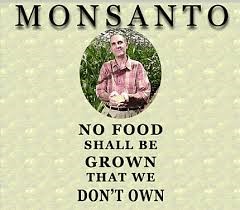
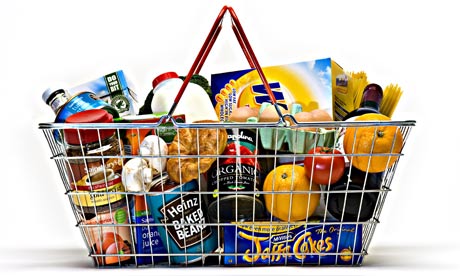

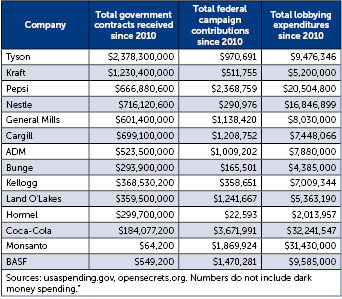







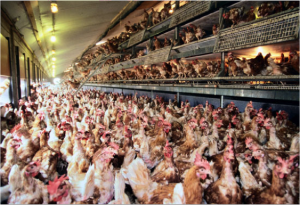 ded to spread pathogens. It is evident that there are people involved in every stage of food processing. Everyone must take responsibility for food safety but taking responsibility makes the businesses liable if something happens. That is why processors blame producers, the government blames processors and producers, and everybody blames the consumer. Each system of food processing (meaning producers and processors) doesn’t want to take the blame for anything because it can be devastating to business profits.
ded to spread pathogens. It is evident that there are people involved in every stage of food processing. Everyone must take responsibility for food safety but taking responsibility makes the businesses liable if something happens. That is why processors blame producers, the government blames processors and producers, and everybody blames the consumer. Each system of food processing (meaning producers and processors) doesn’t want to take the blame for anything because it can be devastating to business profits.
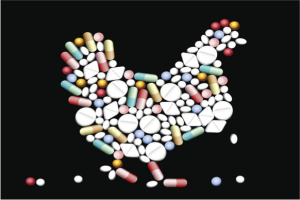 d on the government, there still lie regulation loopholes because billions of dollars are at stake. Food Inc. depicted how these businesses allow animals to live in wretched conditions where there is no sunlight, manure on the ground, and dead animals lying around. They feed the animals waste as “needed protein and other nutrients” and drugs in order to fatten them up cheaper in the shortest time period (26).
d on the government, there still lie regulation loopholes because billions of dollars are at stake. Food Inc. depicted how these businesses allow animals to live in wretched conditions where there is no sunlight, manure on the ground, and dead animals lying around. They feed the animals waste as “needed protein and other nutrients” and drugs in order to fatten them up cheaper in the shortest time period (26).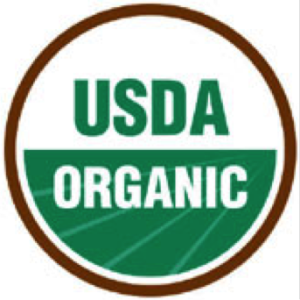 t can’t even regulate conventional farming, how can they regulate organic farming as well? It’s an extremely important job but one that is not being done to the best extent. Overall, the government oversight of the food industry is a mess and needs to improve because there is too much to regulate for the system that we have now.
t can’t even regulate conventional farming, how can they regulate organic farming as well? It’s an extremely important job but one that is not being done to the best extent. Overall, the government oversight of the food industry is a mess and needs to improve because there is too much to regulate for the system that we have now.
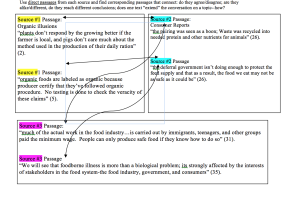 My first draft of my lede wound up being the main idea of my blog. “The government is thought to have full control of the food industry but with the daunting task of inspecting millions of places with powerful companies seeking profit and efficiency, big business use their power to control the food industry to maximize profit.” That was my first draft. I thought about it more, and realized that it wasn’t going to draw a reader in. I tried to make my lead more creative by coming up with a dog and leash metaphor, “ The government doesn’t have its leash tight enough on the food industry because they can’t tame the big businesses running the industry. It seems like the U.S. government is controlling the food industry, but actually big businesses are the ones in power because former CEO’s of their companies have roles in the government. The government is maintaining an illusion that the food industry is okay to the public when it really isn’t.” I tried to say that the government is the dog owner that can’t control the dog. I thought it was creative and would draw a reader in. In my rough draft, it also didn’t state how businesses control the industry so I added another a few more words to state how the people in charge of regulations are on the same side as big businesses.
My first draft of my lede wound up being the main idea of my blog. “The government is thought to have full control of the food industry but with the daunting task of inspecting millions of places with powerful companies seeking profit and efficiency, big business use their power to control the food industry to maximize profit.” That was my first draft. I thought about it more, and realized that it wasn’t going to draw a reader in. I tried to make my lead more creative by coming up with a dog and leash metaphor, “ The government doesn’t have its leash tight enough on the food industry because they can’t tame the big businesses running the industry. It seems like the U.S. government is controlling the food industry, but actually big businesses are the ones in power because former CEO’s of their companies have roles in the government. The government is maintaining an illusion that the food industry is okay to the public when it really isn’t.” I tried to say that the government is the dog owner that can’t control the dog. I thought it was creative and would draw a reader in. In my rough draft, it also didn’t state how businesses control the industry so I added another a few more words to state how the people in charge of regulations are on the same side as big businesses.